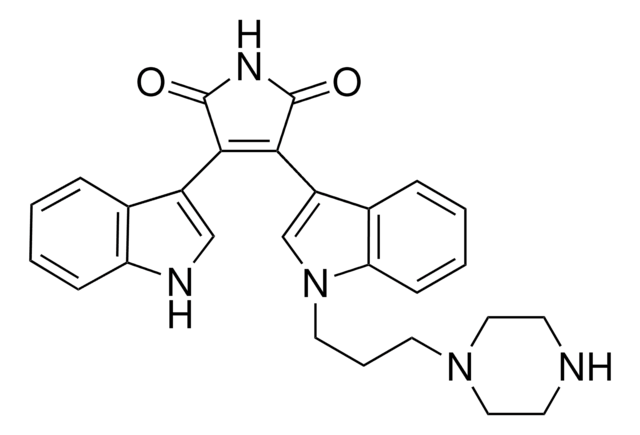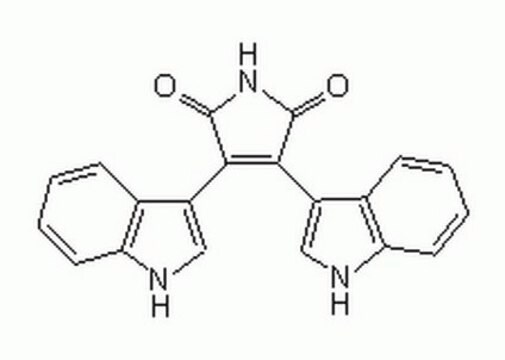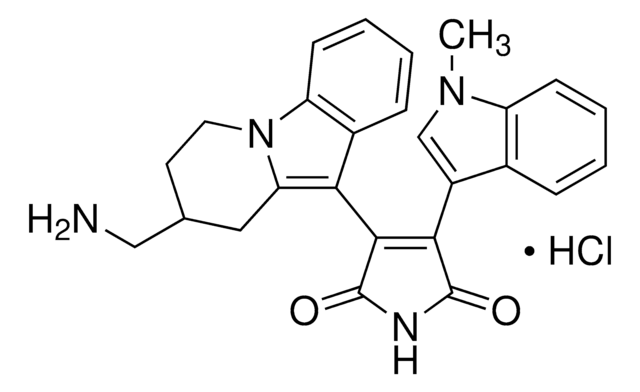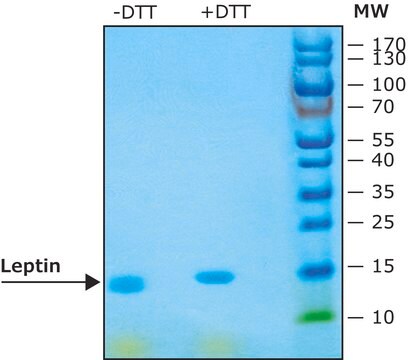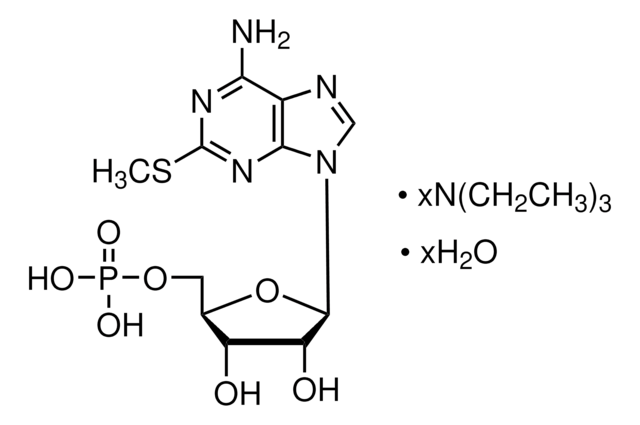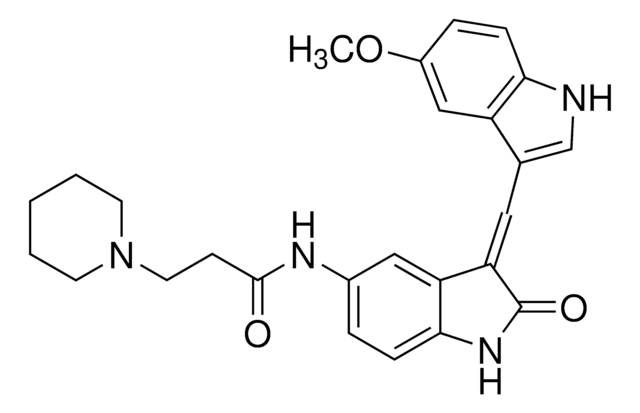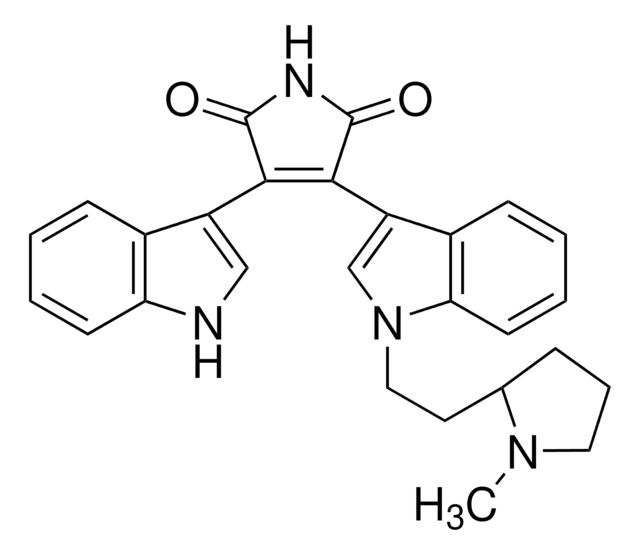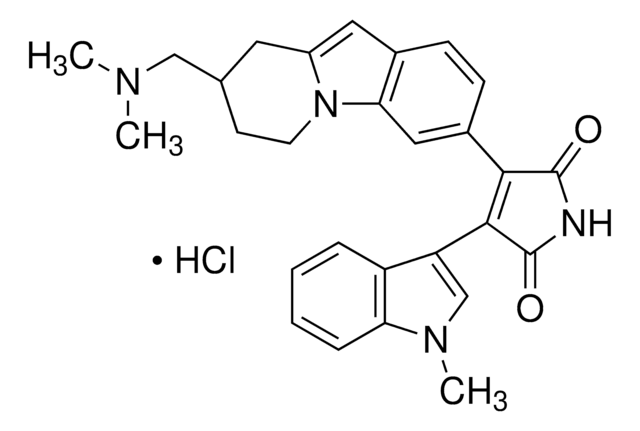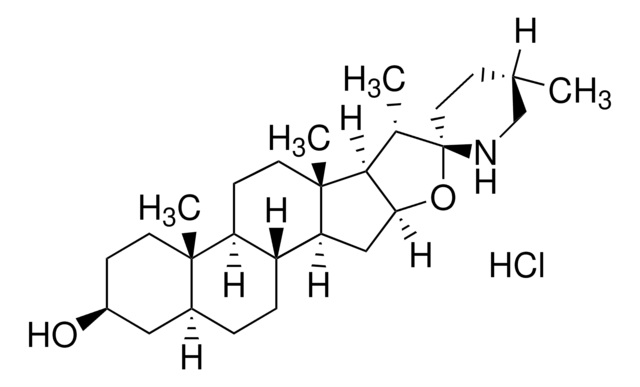B3306
Bisindolylmaleimide IV
≥98% (TLC), solid
Sinônimo(s):
Ro 31-6233
About This Item
Produtos recomendados
fonte biológica
synthetic (organic)
Nível de qualidade
Ensaio
≥98% (TLC)
Formulário
solid
cor
dark red
solubilidade
DMSO: soluble
methanol: soluble
temperatura de armazenamento
−20°C
cadeia de caracteres SMILES
O=C1NC(=O)C(c2c[nH]c3ccccc23)=C1c4c[nH]c5ccccc45
InChI
1S/C20H13N3O2/c24-19-17(13-9-21-15-7-3-1-5-11(13)15)18(20(25)23-19)14-10-22-16-8-4-2-6-12(14)16/h1-10,21-22H,(H,23,24,25)
chave InChI
DQYBRTASHMYDJG-UHFFFAOYSA-N
Informações sobre genes
human ... CDK2(1017) , EGFR(1956)
rat ... Prkca(24680)
Ações bioquímicas/fisiológicas
Código de classe de armazenamento
11 - Combustible Solids
Classe de risco de água (WGK)
WGK 3
Ponto de fulgor (°F)
Not applicable
Ponto de fulgor (°C)
Not applicable
Equipamento de proteção individual
Eyeshields, Gloves, type N95 (US)
Escolha uma das versões mais recentes:
Já possui este produto?
Encontre a documentação dos produtos que você adquiriu recentemente na biblioteca de documentos.
Nossa equipe de cientistas tem experiência em todas as áreas de pesquisa, incluindo Life Sciences, ciência de materiais, síntese química, cromatografia, química analítica e muitas outras.
Entre em contato com a assistência técnica